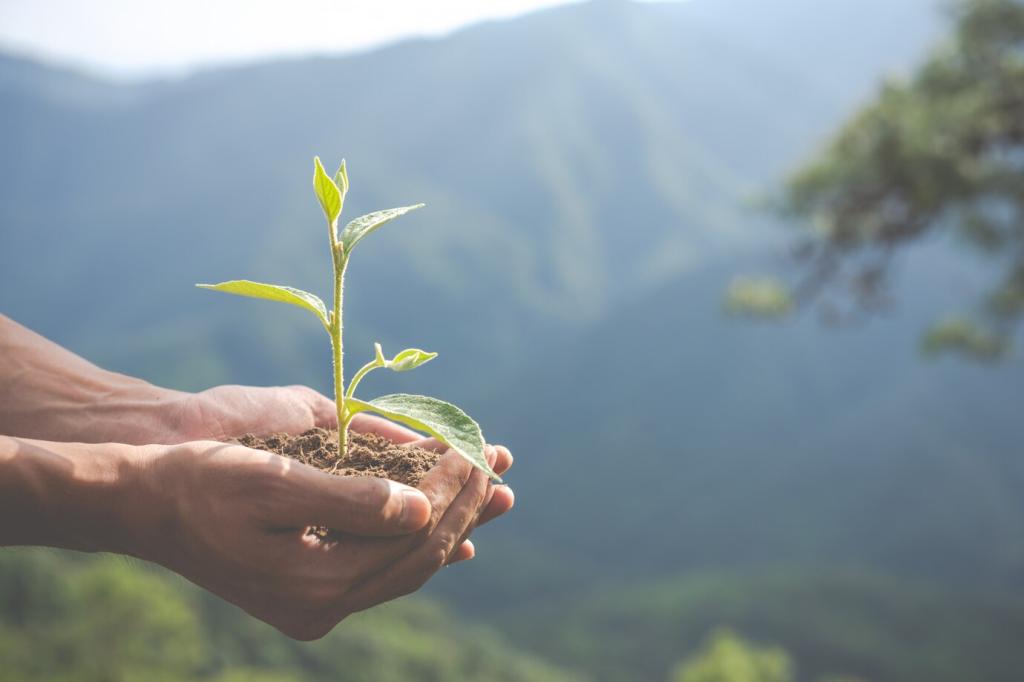Sustainability in the Kitchen: Cook Smart, Waste Less, Live Deliciously
Chosen theme: Sustainability in the Kitchen. Welcome to a practical, uplifting space where mindful cooking meets everyday joy. We’ll turn leftovers into legends, stretch ingredients with creativity, and make greener choices feel easy. Join our community, subscribe for weekly tips, and share your favorite sustainable kitchen win in the comments today.

Start with the Fridge: Foundations of Sustainable Cooking
Before you shop, open the fridge and make a quick list. Group items by urgency, highlight anything nearing its peak, and plan two meals around those. This simple ritual prevents duplicate buys, saves money, and turns forgotten corners into tonight’s inspiration. Comment with your favorite “use-it-up” combo.
Keep herbs in jars of water like bouquets, wrap leafy greens in a breathable towel, and store mushrooms in paper. Label leftovers with dates and stack them in clear containers. These small habits keep food visible, fresh, and inviting, which means you’ll actually cook and enjoy what you bought.
Last winter, I found a bendy carrot hiding in the crisper. Instead of tossing it, I roasted it with cumin, blended it into a soup, and loved every spoonful. That bowl reminded me: sustainability in the kitchen thrives on curiosity, patience, and second chances. What rescue recipe saved your day?
Turn broccoli stems into slaw, beet greens into garlicky sauté, and citrus peels into zesty sugar or vinegar infusions. Potato peels crisp beautifully in the oven. These root-to-stem ideas celebrate overlooked flavor and reduce bin-bound waste. Share your favorite stem or peel transformation with our readers.

Energy-Savvy Appliances and Habits
Choose the smallest appliance that does the job. A covered pan on the stovetop often heats faster than a preheated oven, especially for small portions. Slice vegetables thinner to reduce cooking time. These choices conserve energy without compromising taste, and dinner arrives sooner. What’s your quickest energy-smart meal?
Sustainable Shopping and Local Networks
01
Seasonality as a Flavor Map
Plan meals around what’s in season locally. Seasonal produce often tastes better, travels less, and stores longer. Tomatoes in summer, squash in fall—your menu becomes a celebration of place and time. Ask your market vendor what’s peaking today, then build a simple, joyful dish around it.
02
Bulk Buying Without Waste
Bring jars or bags to refill grains, nuts, and spices. Start small with frequently used items, label clearly, and store in cool, dry cupboards. Buying in bulk avoids extra packaging and saves money. Share a snapshot of your neatly labeled jars, and tell us your most-used staple at home.
03
A Farmer’s Market Story
I once asked a grower how to store delicate berries. She whispered, “Don’t wash until you eat, and give them space to breathe.” Those berries lasted days longer, and my muffins were fantastic. Sustainability in the kitchen often begins with conversations. What tip did you learn from a local producer?
Eco-Friendly Cleaning Without the Harsh Stuff
Vinegar, Baking Soda, and Citrus
Mix vinegar with water for glass and counters, use baking soda for stuck-on pans, and save citrus peels for a fragrant vinegar infusion. Test on small areas first, and rinse surfaces that touch food. Share your best natural cleaning combo and how it transformed your sink or stovetop.
Microfiber vs. Paper Towels
Reusable cloths outperform disposables when cared for properly. Keep a rotation of microfiber or cotton rags, launder them regularly, and color-code by task. You’ll cut waste and save money over time. Tell us how you reduced paper towel use and what surprised you about the transition.
Mindful Water Use
Fill a basin for dishwashing instead of running the tap, scrape plates well before washing, and soak pans to loosen grime. These habits reduce water use and effort. Pair them with air-drying racks for extra efficiency. What tiny tweak helped you conserve water without sacrificing cleanliness?
Composting, Scraps, and Soil
Use a small lidded bin or freezer container for vegetable peels, coffee grounds, and eggshells. Empty it into a backyard pile or community compost. A carbon layer of dried leaves or shredded paper helps balance moisture and odor. Share your setup and the tiniest change that made it easier.

Designing a Kitchen for Everyday Sustainability
Place your prep zone between fridge and sink, with compost and recycling within easy reach. Keep tools for chopping and containers for storage close by. When good choices are convenient, they become the default. Share a photo of your layout tweak that made sustainable cooking smoother this week.


Designing a Kitchen for Everyday Sustainability
Clear containers reduce mystery meals and inspire faster decisions. Label jars with contents and dates, and create a visible “eat first” shelf in your fridge. This small system simplifies planning and keeps food out of the trash. What labeling trick has saved you the most ingredients lately?
